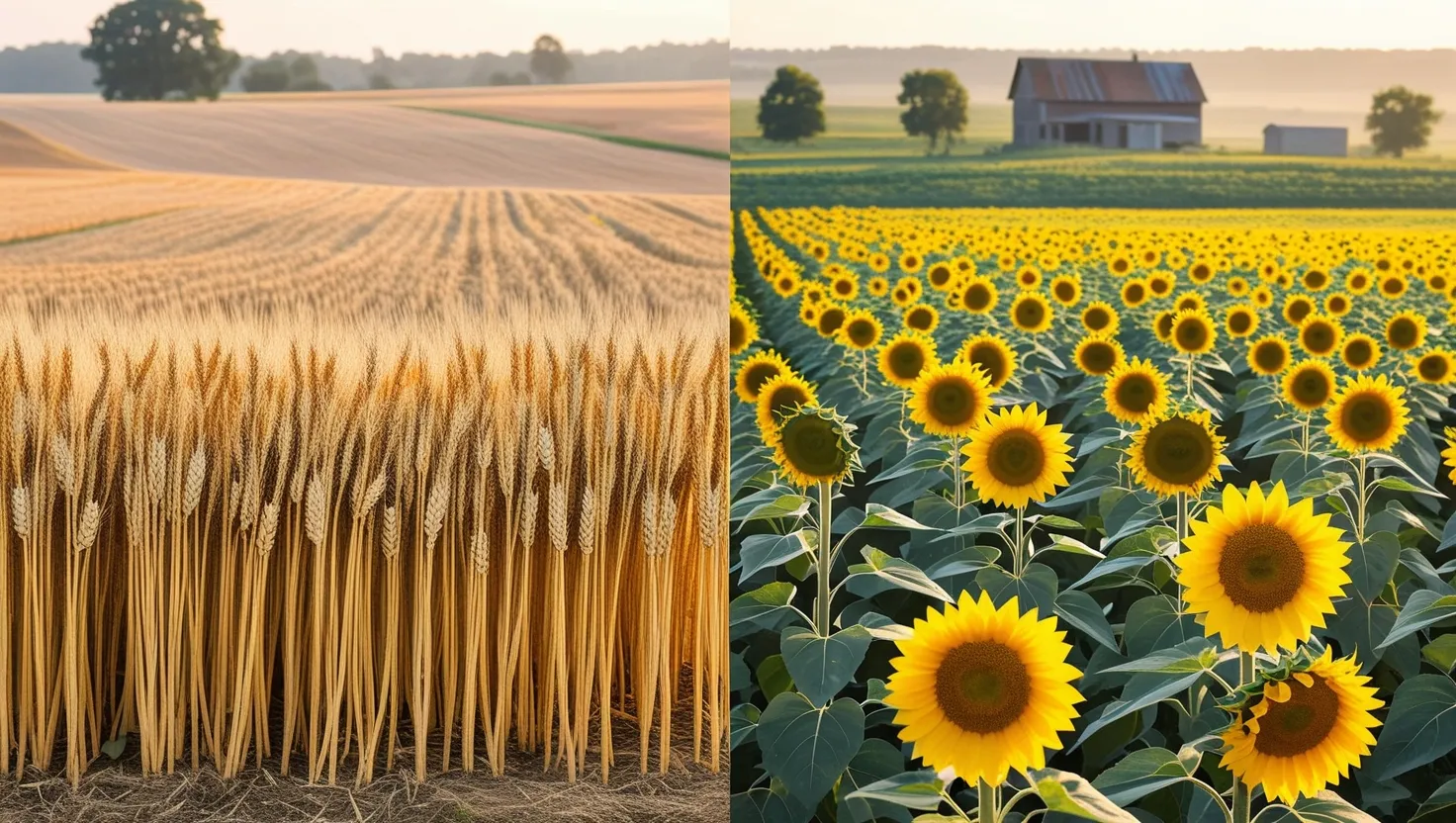Every season, as the earth begins to warm and the frost retreats, life on the farm buzzes with choices both routine and quietly monumental. This story, set on a modest parcel of rural land, follows a farmer guided by the whisper of legacy—the treasured wheat seeds saved by his father, kernels held between calloused thumbs, full of memory and meaning. The plan was simple, or so it seemed: plant those seeds, and with them, keep the past alive.
But what happens when tradition meets new ideas? When the farmer’s daughter, sharp-eyed and confident, suggests planting sunflowers instead, it’s not simply a clash over crops. It’s a test of identity: are we bound by what came before us, or do we risk something for the hope of improvement? Profit margins, family pride, and practical science mingle in the air with the sweetness of the soil.
Can you imagine the push and pull of that conversation? Wheat isn’t merely a plant; it’s family history. Every stalk tells a part of the story, and every harvest brings echoes of days gone by. But sunflowers, she argues, have risen in demand. Their oil, their seeds, even their brilliant yellow beauty carries selling power that wheat can’t always match. In some years, a field of sunflowers can bring in double the profit. Isn’t that compelling enough to warrant a change?
As I walk the field in my mind, I picture the farmer holding those wheat seeds, weighing them in his palm. Why do we struggle so much to break from tradition, even when there’s a promising alternative right in front of us? Perhaps it’s fear of disappointing our ancestors. Or perhaps, as John Steinbeck wrote, “A man without words is a man without thought, and a man without thought is dead. But the one with words lives in all time.” Is it possible that the words we repeat—tradition, family, legacy—can sometimes hold us back as much as they carry us forward?
The conversation on this farm soon drifts beyond seeds and soil. It becomes an exploration of something economists call opportunity cost: the real price of a choice isn’t just what you pay, but what you give up. Planting wheat means the sunflowers stay in their packets on the shelf, growing old and unused. Planting sunflowers means the family’s wheat story pauses, possibly for good. Can we really make progress if we don’t accept the cost of what we leave behind?
Here’s a story you might not expect: there’s a region in the Central Great Plains where farmers found that growing wheat and sunflowers in rotation led both crops to thrive. The trick is in letting sunflower stalks stand tall, trapping snow, preserving moisture, and giving next season’s wheat a fresh shot at greatness. Two crops, not one, every three years. Imagine this: what if the farmer and his daughter didn’t have to choose? What if the tension between tradition and profit could become a partnership instead of a rivalry?
Farming isn’t just about following patterns. Some of the most successful growers stray from inherited habits, trusting the land to teach them something new. Did you know that sunflowers, despite being famous for their cheerful faces, are master survivors? Their deep roots stretch far below the surface, sucking up moisture and nutrients in tough conditions. Try finding a plant that can outlast a drought—chances are, a sunflower will give it competition. So, when thinking about long-term sustainability, sunflowers can mean less irrigation, lower costs, and a greater yield in harsh years.
Another detail that often goes unnoticed is the cultural value crops bring. Wheat is comfort food in much of the world—bread, noodles, pastries. Sunflowers, on the other hand, bring not just oil and snack seeds, but fields that double as pollinator paradises. Entire farms, transformed into living canvases, draw visitors who pay for the privilege to wander among the gold. Now the question isn’t just profit from yields, but the unintended benefits: tourism, biodiversity, and revitalized rural economies.
“Don’t judge each day by the harvest you reap,” wrote Robert Louis Stevenson, “but by the seeds that you plant.” In moments of decision, do we focus only on profit, or do we consider the broader effects? It’s easy to fixate on what we might gain or lose in dollars, but the story is bigger: it’s about growth, change, adaptation.
As this farmer and his daughter decide, perhaps they discover that letting go of “either/or” can reveal a “both/and.” They may seed rows of wheat in one field and sunflowers in another, learning first-hand that diversity can protect against the harsh swings of weather and the market. If wheat prices drop, sunflower oil might carry the family through. If pests plague one crop, the other might stay strong. This approach brings security, creativity, and a quieter kind of confidence.
Here’s a curiosity you might find compelling: in Italy, organic sunflower crops are often interplanted with red clover after wheat. The clover enriches the soil for the sunflowers, which then outperform many other summer crops, especially in tough, dry climates. Fewer chemicals, smarter rotations, stronger yields. Sometimes, what seems like a risky departure from tradition is, in time, proven to be the better bet.
I sometimes wonder, if you were standing in that golden field with the farmer and his daughter, what would sway you? Is the comfort and pride of legacy enough, or do you lean toward the excitement of an experiment that could bring in much more? Would you take the risk, or honor the roots? Or, as it turns out, is the wisest decision a blend—carrying the old forward while daring to plant something new alongside it?
“Change is the law of life,” said John F. Kennedy, “and those who look only to the past or present are certain to miss the future.” The farm is, and always has been, about calculated risk. Every choice sown in spring is a wager on rain, sun, and market fickleness. At the crux of these choices is the lesson in opportunity cost: every gain has a price, every tradition is weighed against tomorrow’s needs.
As the sunflowers rise higher, casting long shadows over the field, it becomes clear this experiment isn’t just about profit. It’s about learning—about how flexibility can keep tradition alive by making it stronger, not weaker. It’s about how growth sometimes means letting new voices guide the family story, even if it changes the plot.
So, when the harvest comes, and the field glows with yellow and gold, what is gained and what is lost? The answer isn’t found in ledgers alone. It’s found in the farmer’s pride when his granddaughter points to the thriving sunflowers, in the knowledge that the old wheat seeds are still—somewhere—waiting for their time again, and in the understanding that every field, like every family, is built on a mix of memory and boldness.
If I were to ask you, standing ankle-deep in rich soil beneath a horizon split by wheat and sunflowers, would you cling to the seeds of the past, or take a chance on a golden bloom you’ve never seen before? Maybe, like this farmer and his daughter, you’d find opportunity in both—the wisdom to cherish old lessons, and the courage to sow new ones.






